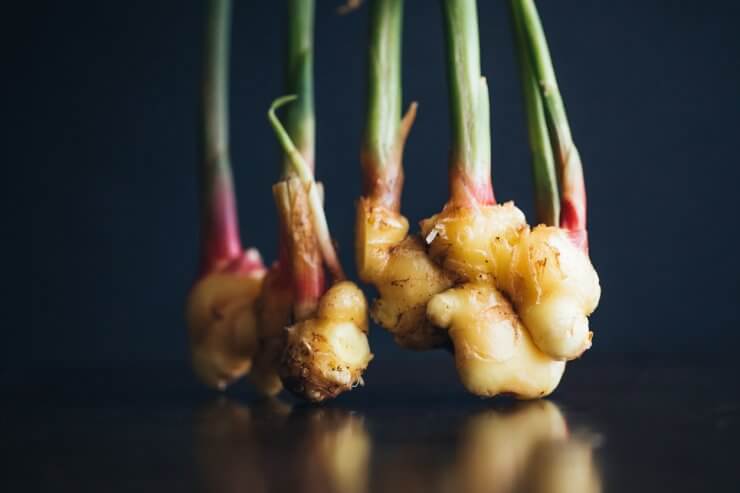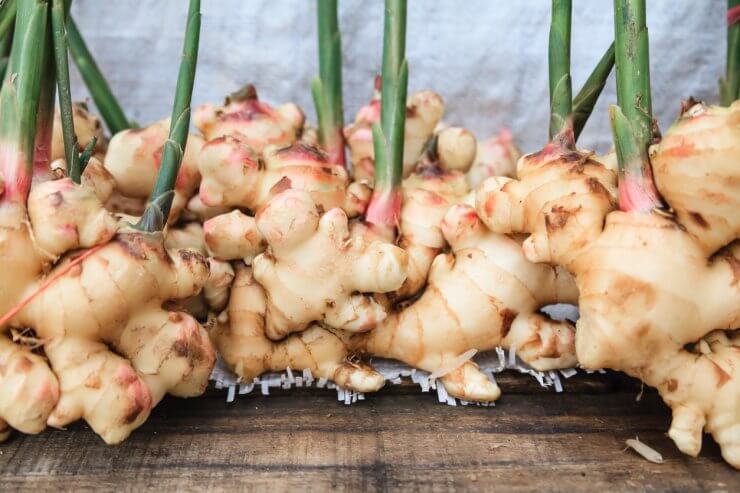
Remember that piece of ginger root that sat on your shelf for too long and started growing little sprouts? Yes, the one you threw into the compost bin? That should be proof enough that growing ginger indoors is about as easy as it gets.
I’ll admit, it’s happened to me a few times. I’ve bought ginger for one recipe, then forgot about the rest of the root until it was sprouting. The thing is, I always composted it because I didn’t realize how easy it is to grow ginger. Live and learn, right?
If you can give ginger a warm, humid climate in your home, that’s about all it takes. It’s not that different from taking care of your other houseplants. So let’s get to the root of things, shall we?

Growing ginger indoors: Your quick-start guide to planting and caring for this culinary treat
The first thing I should mention is that if you’re thinking about growing ginger indoors (or outdoors if you live in a tropical climate), you’ll actually grow it from a rhizome rather than a seed. Though technically different than a root, the ginger rhizome is what most people are referring to when they talk about ginger roots.
That doesn’t change how you’ll plant or grow your ginger, but it is good to know when you’re selecting or reading about your ginger. And I should also warn you that what you buy at the grocery store probably won’t work. Yes, it will sometimes sprout, and you’ll be able to enjoy your very own ginger plant, but grocery store ginger can also be treated to prevent it from sprouting.
You can certainly try using a rhizome from a grocery store, but you have a much better chance of success if you buy rhizomes from your favorite garden shop. Once you have your ginger root/rhizome, we can move onto the fun stuff!
- Make sure your ginger has “eyes” (similar to a potato) and soak it overnight in warm water.
- Meanwhile, prepare your container. Ginger stretches out horizontally, so you can use a shallow container, but try to find something reasonably wide. Fill it with a rich, well-draining potting mix.
- Place your ginger in the soil with the buds/eyes facing up and cover it with about an inch of potting mix.
- Place the container in a warm, partially sunny spot. Keep the soil moist, but not soaking.
- Ginger enjoys humidity, so it can help either mist it regularly or place a small container of water beside it to keep moisture in the air.
That’s about all there is to growing ginger indoors. After that, you just need some patience. It will take a few weeks for the ginger to appear, and another several months before you can harvest it.
When you’re ready to harvest, simply dig into the soil and cut off a piece of the rhizome, then cover it back up. It’s best to leave at least a couple of inches closest to the plant, and allow two or three weeks between cuttings. That said, there’s no reason you can’t have several ginger plants growing at the same time! Ginger cookies, ginger tea, ginger everything all around!
Seriously, though, growing ginger indoors really is easy. If you can keep a fern alive, you can grow ginger. It’s not terribly different.
Have you tried growing ginger indoors? What was your experience like?
Ginger is easier to grow than you may think! With the Zesty Ginger Gardening Guide, you’ll have everything you need to know about growing and enjoying this versatile plant—including specific advice about soil requirements and fertilizer, watering techniques to details about avoiding bacterial wilt, and even easy-to-make and delicious recipes that will allow you to enjoy the fruits of your ginger gardening labor!The Zesty Ginger Gardening Guide Available Now!


 Previous
Previous



I have several ginger plants that I plant outside in pots and then bring dig up and bring in for winter (I’m zone 6B), how often should I harvest my ginger before it becomes old. Last year my ginger roots were tough.
The best time to harvest ginger is 8 to 10 months after planting.
I have successfully sprouted and have grown lovely ginger from store bought ginger. I washed it off then started it in water. When I saw nibs I plonked them in garden soil mix with coconut coir. Success!
Ginger! wow! thank you
Veggie from the grocers usually are treated with some type of substance to stop things from sprouting.
I do have ginger roots in my garden that have become very crowded. I’m removing the ones outside the group. I’m not sure if these are edible. Do you have information on this?
Yes that’s true, if you soak it overnight, you can remove the growth inhibitor and any pesticides that might have been used. It’s not guaranteed, but it does work! 🙂 And if your spreading ginger is the same species as the core group, it would be edible, edibility of ginger is dependent on the species.